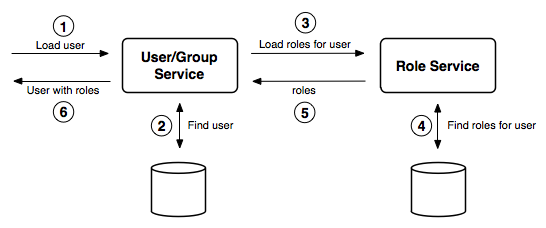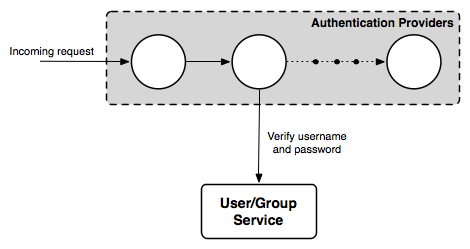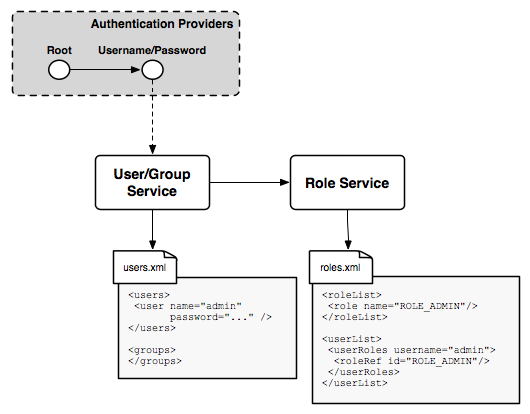Interaction between user/group and role services¶
The following section describes the interaction between the User/group services and the Role services.
Calculating the roles of a user¶
The diagram below illustrates how a user/group service and a role service interact to calculate user roles.

User/group and role service interacting for role calculation
On fetching an enabled user from a user/group service, the roles(s) assigned to that user must be identified. The identification procedure is:
- Fetch all enabled groups for the user. If a group is disabled, it is discarded.
- Fetch all roles associated with the user and add the roles to the result set.
- For each enabled group the user is a member of, fetch all roles associated with the group and add the roles to the result set.
- For each role in the result set, fetch all ancestor roles and add those roles to the result set.
- Personalize each role in the result set as required.
- If the result set contains the local admin role, add the role
ROLE_ADMINISTRATOR. - If the result set contains the local group admin role, add the role
ROLE_GROUP_ADMIN.
Note
Role personalization looks for role parameters (key/value pairs) for each role and checks if the user properties (key/value pairs) contain an identical key. If any matches are found, the value of the role parameter is replaced by the value of the user property.
Authentication of user credentials¶
A user/group service is primarily used during authentication. An authentication provider in the Authentication chain may use a user/group service to authenticate user credentials.

Using a a user/group service for authentication
GeoServer defaults¶
The following diagram illustrates the default user/group service, role service, and authentication provider in GeoServer:

Default GeoServer security configuration
Two authentication providers are configured—the Root provider and the Username/password provider. The Root provider authenticates for the GeoServer Root account and does not use a user/group service. The Username/password provider is the default provider and relays username and password credentials to a user/group service.
A single user/group service, which persist the user database as XML, is present. The database contains a single user named admin and no groups. Similarly, the role server persists the role database as XML. By default, this contains a single role named ADMIN, which is associated with the admin user. The ADMIN role is mapped to the ROLE_ADMINISTRATOR role and as a result, the admin user is associated with system administrator role during role calculation.